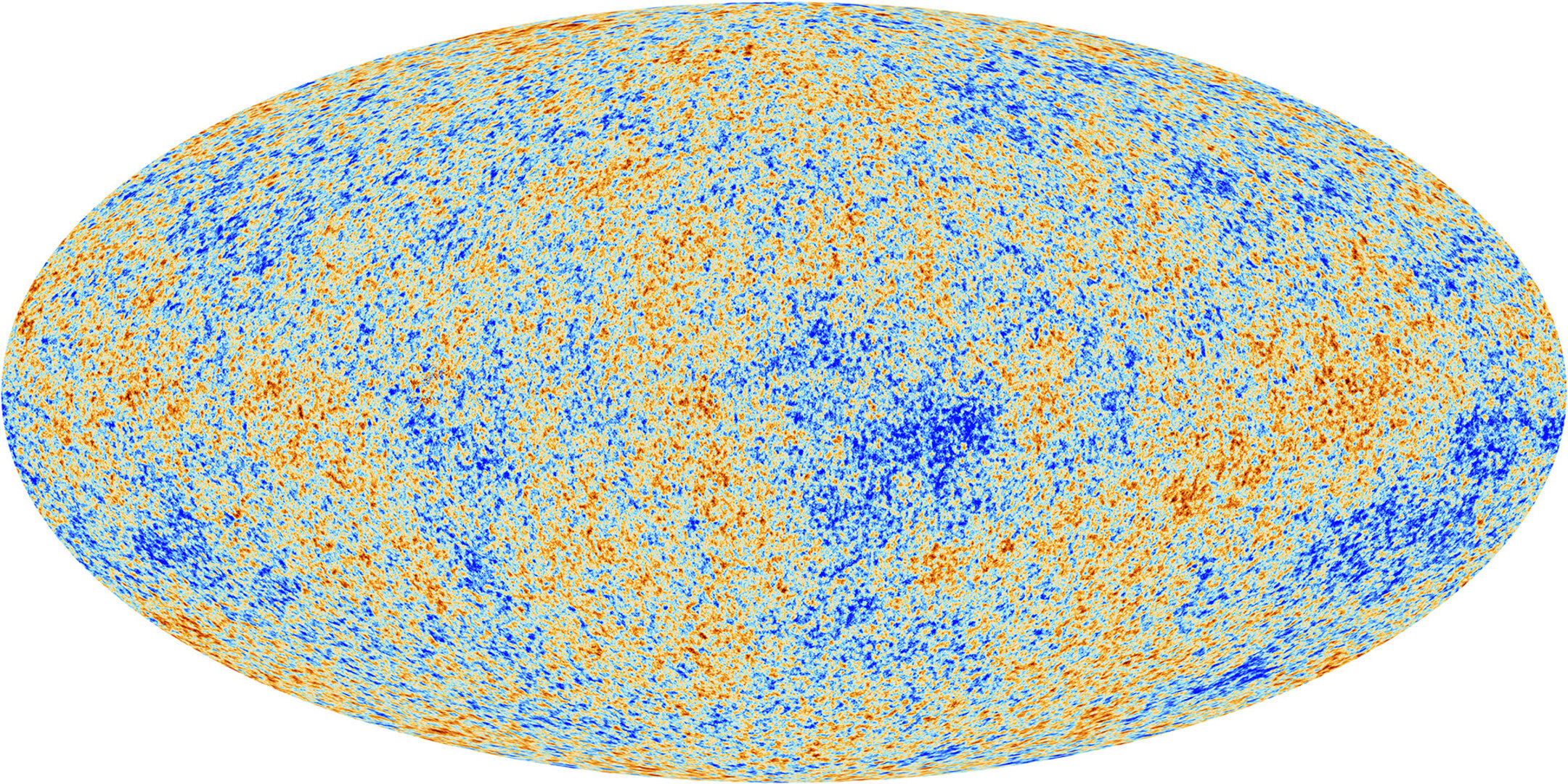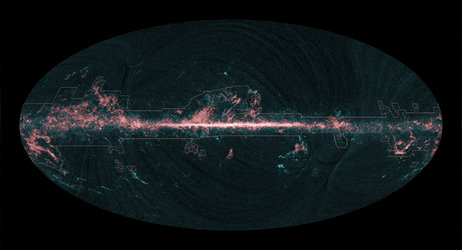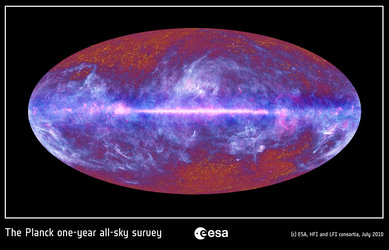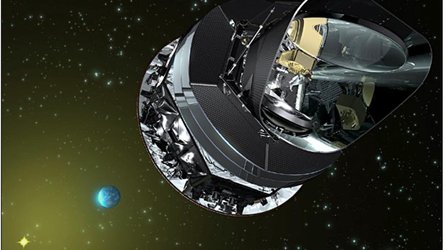Planck reveals an almost perfect Universe
Acquired by ESA’s Planck space telescope, the most detailed map ever created of the cosmic microwave background – the relic radiation from the Big Bang – was released today revealing the existence of features that challenge the foundations of our current understanding of the Universe.
The image is based on the initial 15.5 months of data from Planck and is the mission’s first all-sky picture of the oldest light in our Universe, imprinted on the sky when it was just 380 000 years old.
At that time, the young Universe was filled with a hot dense soup of interacting protons, electrons and photons at about 2700ºC. When the protons and electrons joined to form hydrogen atoms, the light was set free. As the Universe has expanded, this light today has been stretched out to microwave wavelengths, equivalent to a temperature of just 2.7 degrees above absolute zero.
This ‘cosmic microwave background’ – CMB – shows tiny temperature fluctuations that correspond to regions of slightly different densities at very early times, representing the seeds of all future structure: the stars and galaxies of today.
According to the standard model of cosmology, the fluctuations arose immediately after the Big Bang and were stretched to cosmologically large scales during a brief period of accelerated expansion known as inflation.
Planck was designed to map these fluctuations across the whole sky with greater resolution and sensitivity than ever before. By analysing the nature and distribution of the seeds in Planck’s CMB image, we can determine the composition and evolution of the Universe from its birth to the present day.
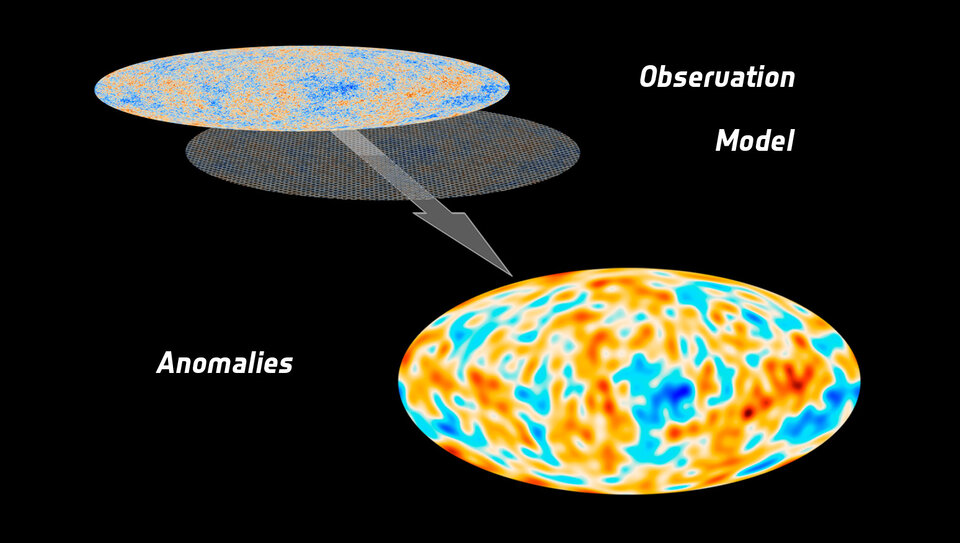
Overall, the information extracted from Planck’s new map provides an excellent confirmation of the standard model of cosmology at an unprecedented accuracy, setting a new benchmark in our manifest of the contents of the Universe.
But because precision of Planck’s map is so high, it also made it possible to reveal some peculiar unexplained features that may well require new physics to be understood.
“The extraordinary quality of Planck’s portrait of the infant Universe allows us to peel back its layers to the very foundations, revealing that our blueprint of the cosmos is far from complete. Such discoveries were made possible by the unique technologies developed for that purpose by European industry,” says Jean-Jacques Dordain, ESA’s Director General.
“Since the release of Planck’s first all-sky image in 2010, we have been carefully extracting and analysing all of the foreground emissions that lie between us and the Universe’s first light, revealing the cosmic microwave background in the greatest detail yet,” adds George Efstathiou of the University of Cambridge, UK.
One of the most surprising findings is that the fluctuations in the CMB temperatures at large angular scales do not match those predicted by the standard model – their signals are not as strong as expected from the smaller scale structure revealed by Planck.
Continue reading below
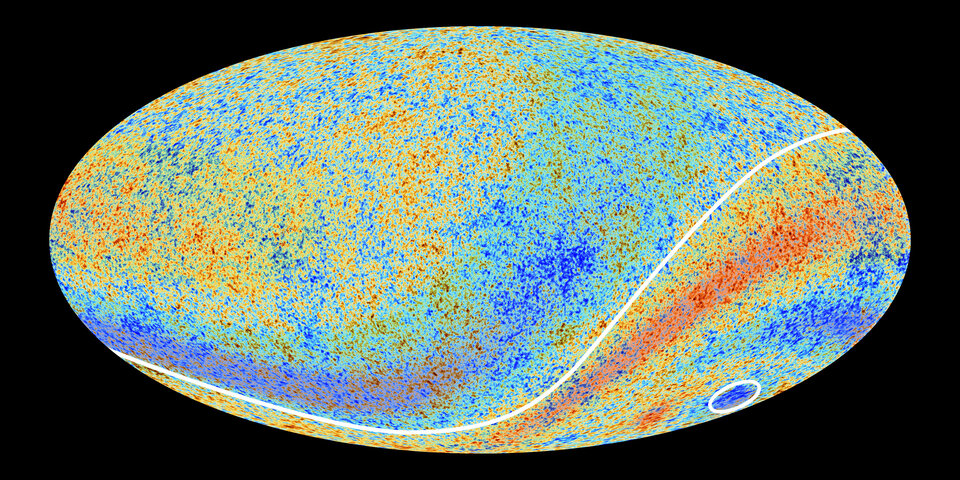
Another is an asymmetry in the average temperatures on opposite hemispheres of the sky. This runs counter to the prediction made by the standard model that the Universe should be broadly similar in any direction we look.
Furthermore, a cold spot extends over a patch of sky that is much larger than expected.
The asymmetry and the cold spot had already been hinted at with Planck’s predecessor, NASA’s WMAP mission, but were largely ignored because of lingering doubts about their cosmic origin.
“The fact that Planck has made such a significant detection of these anomalies erases any doubts about their reality; it can no longer be said that they are artefacts of the measurements. They are real and we have to look for a credible explanation,” says Paolo Natoli of the University of Ferrara, Italy.
“Imagine investigating the foundations of a house and finding that parts of them are weak. You might not know whether the weaknesses will eventually topple the house, but you’d probably start looking for ways to reinforce it pretty quickly all the same,” adds François Bouchet of the Institut d’Astrophysique de Paris.
One way to explain the anomalies is to propose that the Universe is in fact not the same in all directions on a larger scale than we can observe. In this scenario, the light rays from the CMB may have taken a more complicated route through the Universe than previously understood, resulting in some of the unusual patterns observed today.
“Our ultimate goal would be to construct a new model that predicts the anomalies and links them together. But these are early days; so far, we don’t know whether this is possible and what type of new physics might be needed. And that’s exciting,” says Professor Efstathiou.
New cosmic recipe
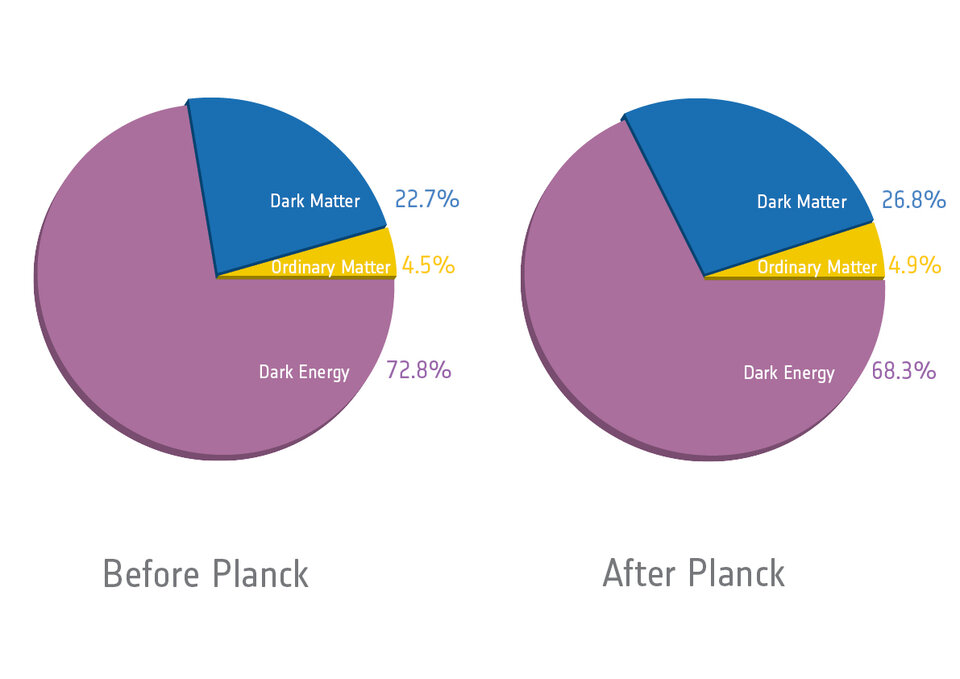
Beyond the anomalies, however, the Planck data conform spectacularly well to the expectations of a rather simple model of the Universe, allowing scientists to extract the most refined values yet for its ingredients.
Normal matter that makes up stars and galaxies contributes just 4.9% of the mass/energy density of the Universe. Dark matter, which has thus far only been detected indirectly by its gravitational influence, makes up 26.8%, nearly a fifth more than the previous estimate.
Conversely, dark energy, a mysterious force thought to be responsible for accelerating the expansion of the Universe, accounts for less than previously thought.
Finally, the Planck data also set a new value for the rate at which the Universe is expanding today, known as the Hubble constant. At 67.15 kilometres per second per megaparsec, this is significantly less than the current standard value in astronomy. The data imply that the age of the Universe is 13.82 billion years.
“With the most accurate and detailed maps of the microwave sky ever made, Planck is painting a new picture of the Universe that is pushing us to the limits of understanding current cosmological theories,” says Jan Tauber, ESA’s Planck Project Scientist.
“We see an almost perfect fit to the standard model of cosmology, but with intriguing features that force us to rethink some of our basic assumptions.
“This is the beginning of a new journey and we expect that our continued analysis of Planck data will help shed light on this conundrum.”















 Germany
Germany
 Austria
Austria
 Belgium
Belgium
 Denmark
Denmark
 Spain
Spain
 Estonia
Estonia
 Finland
Finland
 France
France
 Greece
Greece
 Hungary
Hungary
 Ireland
Ireland
 Italy
Italy
 Luxembourg
Luxembourg
 Norway
Norway
 The Netherlands
The Netherlands
 Poland
Poland
 Portugal
Portugal
 Czechia
Czechia
 Romania
Romania
 United Kingdom
United Kingdom
 Slovenia
Slovenia
 Sweden
Sweden
 Switzerland
Switzerland

























